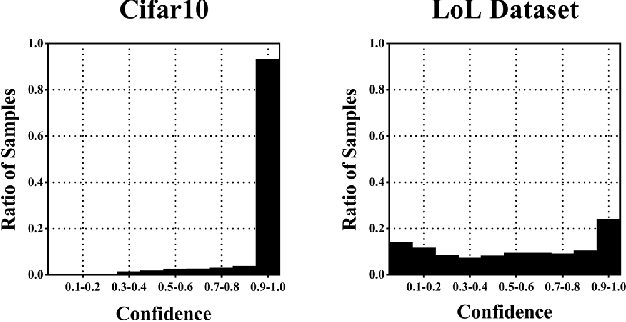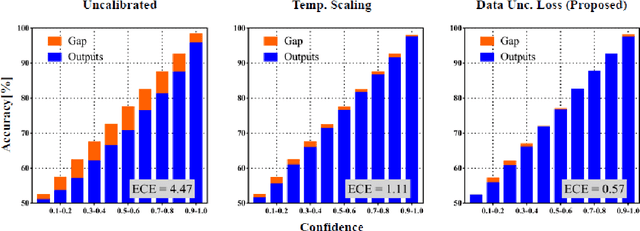Dong-Hee Kim
Joint-Embedding Predictive Architecture for Self-Supervised Learning of Mask Classification Architecture
Jul 15, 2024



Abstract:In this work, we introduce Mask-JEPA, a self-supervised learning framework tailored for mask classification architectures (MCA), to overcome the traditional constraints associated with training segmentation models. Mask-JEPA combines a Joint Embedding Predictive Architecture with MCA to adeptly capture intricate semantics and precise object boundaries. Our approach addresses two critical challenges in self-supervised learning: 1) extracting comprehensive representations for universal image segmentation from a pixel decoder, and 2) effectively training the transformer decoder. The use of the transformer decoder as a predictor within the JEPA framework allows proficient training in universal image segmentation tasks. Through rigorous evaluations on datasets such as ADE20K, Cityscapes and COCO, Mask-JEPA demonstrates not only competitive results but also exceptional adaptability and robustness across various training scenarios. The architecture-agnostic nature of Mask-JEPA further underscores its versatility, allowing seamless adaptation to various mask classification family.
Neural-network quantum state study of the long-range antiferromagnetic Ising chain
Sep 01, 2023Abstract:We investigate quantum phase transitions in the transverse field Ising chain with algebraically decaying long-range antiferromagnetic interactions by using the variational Monte Carlo method with the restricted Boltzmann machine being employed as a trial wave function ansatz. In the finite-size scaling analysis with the order parameter and the second R\'enyi entropy, we find that the central charge deviates from 1/2 at a small decay exponent $\alpha_\mathrm{LR}$ in contrast to the critical exponents staying very close to the short-range (SR) Ising values regardless of $\alpha_\mathrm{LR}$ examined, supporting the previously proposed scenario of conformal invariance breakdown. To identify the threshold of the Ising universality and the conformal symmetry, we perform two additional tests for the universal Binder ratio and the conformal field theory (CFT) description of the correlation function. It turns out that both indicate a noticeable deviation from the SR Ising class at $\alpha_\mathrm{LR} < 2$. However, a closer look at the scaled correlation function for $\alpha_\mathrm{LR} \ge 2$ shows a gradual change from the asymptotic line of the CFT verified at $\alpha_\mathrm{LR} = 3$, providing a rough estimate of the threshold being in the range of $2 \lesssim \alpha_\mathrm{LR} < 3$.
Emergence of a finite-size-scaling function in the supervised learning of the Ising phase transition
Oct 01, 2020



Abstract:We investigate the connection between the supervised learning of the binary phase classification in the ferromagnetic Ising model and the standard finite-size-scaling theory of the second-order phase transition. Proposing a minimal one-free-parameter neural network model, we analytically formulate the supervised learning problem for the canonical ensemble being used as a training data set. We show that just one free parameter is capable enough to describe the data-driven emergence of the universal finite-size-scaling function in the network output that is observed in a large neural network, theoretically validating its critical point prediction for unseen test data from different underlying lattices yet in the same universality class of the Ising criticality. We also numerically demonstrate the interpretation with the proposed one-parameter model by providing an example of finding a critical point with the learning of the Landau mean-field free energy being applied to the real data set from the uncorrelated random scale-free graph with a large degree exponent.
A Confidence-Calibrated MOBA Game Winner Predictor
Jun 28, 2020



Abstract:In this paper, we propose a confidence-calibration method for predicting the winner of a famous multiplayer online battle arena (MOBA) game, League of Legends. In MOBA games, the dataset may contain a large amount of input-dependent noise; not all of such noise is observable. Hence, it is desirable to attempt a confidence-calibrated prediction. Unfortunately, most existing confidence calibration methods are pertaining to image and document classification tasks where consideration on uncertainty is not crucial. In this paper, we propose a novel calibration method that takes data uncertainty into consideration. The proposed method achieves an outstanding expected calibration error (ECE) (0.57%) mainly owing to data uncertainty consideration, compared to a conventional temperature scaling method of which ECE value is 1.11%.
 Add to Chrome
Add to Chrome Add to Firefox
Add to Firefox Add to Edge
Add to Edge